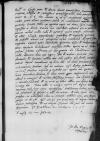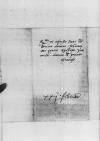 BCz, 1595, p. 923
BCz, 1595, p. 923
Reverendissime in Christo Pater et Domine, domine gratiosissime.
Sanitatem et prosperos succesus et felicissimam transmigrationem sedis pontificalis faveo Reverendissimae Dominationi Vestrae.
Non lateat Reverendissimam Dominationem Vestram ⌊maiestatem regiam⌋ crebro pedum dolore molestari, facile tamen medicinarum auxilio sanatur. Praeterea cometa stella, qui apparere coepit, cum Mars signum mutavit, ingressus in Leonem cauda sua capitibus nostrorum, qui in ⌊Podolia⌋ fuerant, militum multa mala et extremum exitium paravit. Truncati et occisi Vlodek[1], ⌊Czarnkowsky⌋, ⌊Pyleczky⌋ et ⌊Vaglynsky⌋ potiores et praefecti aliorum cum quingentis misere interierunt decepti strategemate. Ceterum pestis obambulat granicies ⌊Slesiae⌋ et ⌊Lomzam⌋ ⌊Mazoviae⌋. ⌊Episcopus Vratislaviensis⌋ apoplexia tactus, rursus, ut mihi scribit, pristinae sanitati restitutus est, Deo gratia. De ⌊Vladislaviensi autem electo⌋ dominus Deus, qui regna dat et aufert, providit sua clementia et bonitate ecclesiam Dei tali pastore, qui facile arcere poterit luporum truculentiam ab domo Dei non modo prudentia, sed etiam potentia saeculari. Sed, ut arbitror, nisi Dominus custodierit civitatem, frustra vigilat, qui custo ms. u(!)
⌈oo ms. u(!)
⌉dit eam.
Qualis autem exitus huius ⌊conventionis⌋ futurus sit, Deus novit, propter conspirationes nonnullorum in principem et urbicos subditosque principis, hoc idem fieri audio in ⌊Ducatu Clevensi⌋ et ita verum est illud: illius qui conscius erat paper damaged⌈[at]at paper damaged⌉ secretorum Dei. Totus mundus in maligno positus est. Viginti milia paper damaged⌈[ia]ia paper damaged⌉ ⌊Tartarorum⌋ visa sunt circa ⌊Myedzybozą⌋. Nihilominus malitia nostrorum tam saecularium quam spiritualium in nullo fit mitior et ideo sequitur illud paper damaged⌈[illud]illud paper damaged⌉ prophetae: si ambulabunt contra me perversi, ambulabo contra eos furore perverso. Et haec sunt Reverendissime Domine, quae mihi visa sunt digna calamo.
Valeat felicissime et me diligat Iohannem illum suum ad omnia obsequentem.


 BCz, 1595, p. 924
BCz, 1595, p. 924